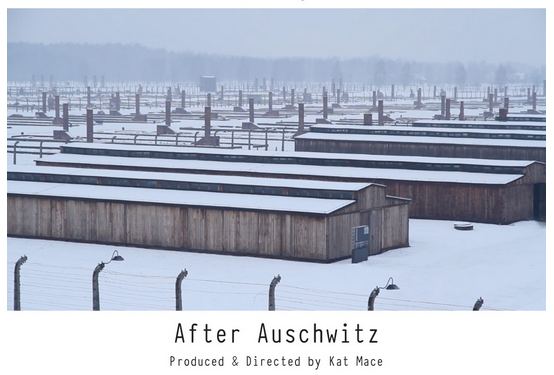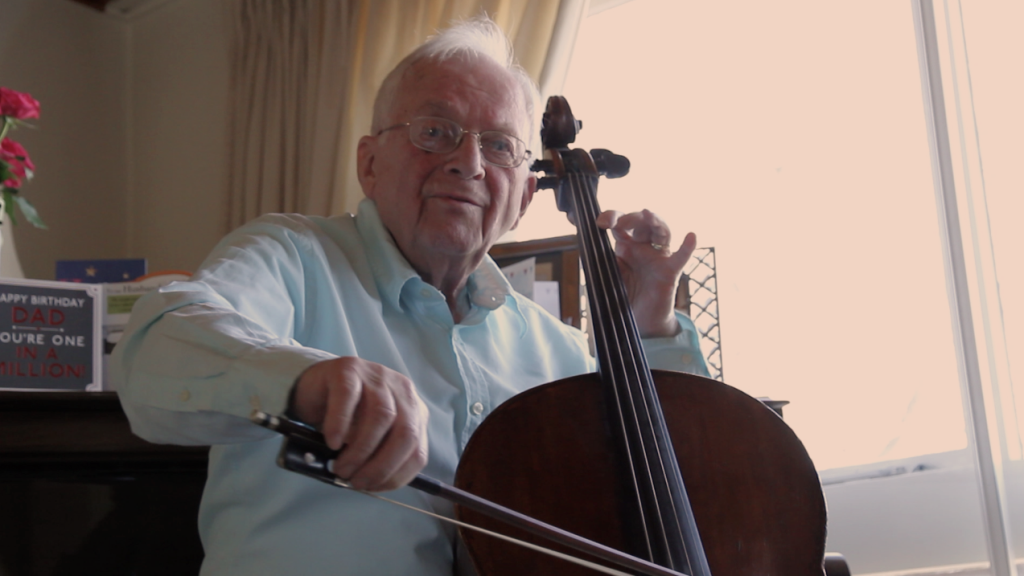After Auschwitz
‘After Auschwitz’ is a 60min documentary reiterating the importance of holocaust education within society today. As our contributors maintain, the world has not learned from the events of the past and still, we see acts of discrimination, segregation and violence towards certain communities.
Touching upon contemporary issues such as the Rise of the Golden Dawn in Greece, the mistreatment of Roma within Europe and anti-Semitism in modern Hungary, the documentary highlights the extremities to which humanity can go – a place we must never go again.
The documentary attempts to warn of what can happen, and reflects upon events today that show that discrimination still happens. It is important for this reason – be us children, adults, politicians, teachers or film-makers – that we learn about the events of the holocaust and continue to pass on these lessons for generations to come.
I was interviewed for the R13 Degree Show at Ravensbourne. Here’s what happened.
If you’re interested in knowing more about the process behind the doc, then please have a read of the ‘Making Of’ magazine. A huge amount of effort from a crew of just 16 went into the film, particularly by my partner and editor who battled heavy eyelids in the edit suite with me for 176hrs straight. I was so lucky to have such wonderful contributors and I very much hope that they inspire you as much as they inspired me!
Meet Our Survivors!!!
Freddie Knoller
- Born in Vienna, 1921
- Lived with his mother & father and two brothers Otto & Erich
- Together they made up the ‘Knoller Brothers Trio’ – with Freddie playing cello, Otto playing the piano and Erich on the violin. (Shown here)
- March 1938, Freddie and his brothers fled. HIs parents remained behind, later perishing in Auschwitz.
- Throughout 1939, Freddie stayed in several refugee camps, playing in camp orchestras and briefly reuniting with cousins & even with his cello!
- May 1940, fleeing the German invasion, Freddie journeyed to France where he was arrested and sent to St. Ciprien concentration camp in the South of France
- He escaped and went to Mon Matre, in france where he worked as a doorman in a nightclub. Here he met Jacqueline
- Freddie joined the French resistance
- Jacqueline betrays him, Freddie is arrested and taken to Drancy transit camp.
- Freddie was then, sent to Auscwhitz, where he received his number ‘157103’
- His friend Dr Robert Waitz, gives him extra food, finds him less strenuous work
- Dec 1944, forced to march to Dora, near Nordhausen.
- April 1945, Americans liberated the camp
- Freddie returend to France, was sent to French village where he was reunited with his brother Erich
- Otto was a doctor in the USA, in 1947 freddie emigrated to the US where he met his wife Freda in 1950. By 31st december, they were married.
- He returned to England with Freda, and has two daughters, Marcia and Susie and a grandson Nadav.
I’ll even treat you to some live cello from Freddie himself, who was kind enough to allow myself and my crew a little performance! AT 86 YEARS OLD!!!
Susan Pollack
- Born in 1930, in Felsogod, Hungary.
- Lived with her mother, father and brother Laci.
- Her uncle was murdered in 1938 by fascists and Laci was forbidden entry to university as a Jew
- Susan’s father found her a school accepting Jewish students in Budapest, she was forced to sit at the back, wear the yellow star on her arm and forbidden to integrate.
- In 1939, many Jews, including her father were beaten, herded onto lorries and driven away to concentration camps.
- April 1944, over just 6 weeks, Susan and the remaining Hungarian Jews, were rounded up and deported. Most of them to Auschwitz-Birkenau.
- Susan, Laci and their mother were sent to the ghetto in Vac, then onto an internment camp before finally in May 1944, being transported to Auschwitz-Birkenau.
- On arrival, Susan was selected to work. Her mother, was sent straight to the gas chamber.
- After 10weeks of work at Auschwitz, Susan was transferred to Gubben to work as an armaments labourer.
- Soon fearing the approaching Allies, the Nazis forced Susan and so many others, on to the famous 790km death-march towards Bergen-Belsen.
- 15th April 1945, Susan was liberated from Bergen-Belsen, starving, weak and frail with Tb and typhoid and completely unable to feel any exuberance.
- Susan then went to Sweden to recover, like many other survivors
- Her brother Laci, returned to the family home in hungary. Having been forced to work in the Sonderkmmando, moving bodies from the gas chambers during the war, he suffered prolonged mental health problems until his death 1995.
- Susan moved to Canada from Sweden, where she met her husband, a fellow survivor.
- She now lives in London, England with her husband. She has three children and six grandchildren.
- Susan lost almost 50 relatives during the holocaust and yet remains one of the most humble and kind human beings I have ever had the privilege to meet.
‘Resilience’
The idea for this long form project began with the video below. Having returned from my own trip to Auschwitz, I pieced together what I had learned, what I had seen and what I felt on arriving home, into a poem and short video collage of photos I had taken. Little did I know that this would lead me towards speaking at the House of Commons, becoming a Regional Ambassador for the Trust and indeed, embarking upon the above project that has proven to be my biggest challenge yet.


